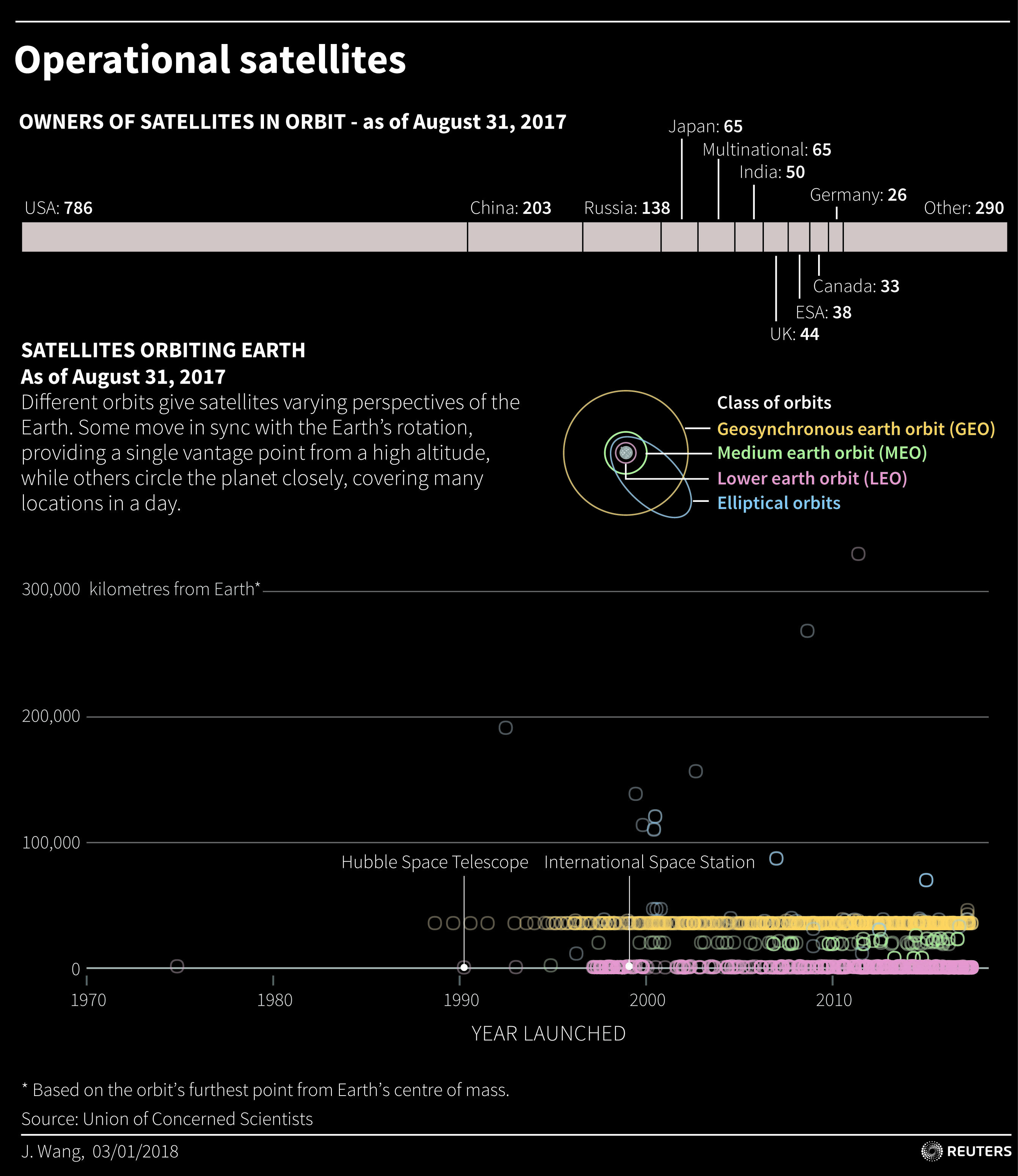We have a space debris problem. Here’s how to solve it

More than half-a-million pieces of space junk larger than a marble orbit the Earth. Image: REUTERS/NASA/Tim Peake/
Nikolai Khlystov
Lead, Space Technologies, Centre for the Fourth Industrial Revolution, World Economic ForumThe first Chinese space station, Tiangong-1, crashed on 1 April over the Southern Pacific, after uncontrollably re-entering the Earth’s atmosphere.
In fact, the station most likely all but burned up on re-entry, ironically very close to the location called ‘spacecraft cemetery’, where space agencies purposefully guide their old spacecraft to crash as it is the most isolated location in the ocean.
The Chinese authorities lost contact with the station back in 2016 and could not guide it since then.
Tiangong-1 is one example of space debris that ended up coming back to Earth and burning up, just like most other debris that re-enters Earth’s atmosphere. That is not a bad thing.
But large quantities of space junk end up staying in various orbits around Earth, threatening satellites, the International Space Station (ISS), as well as future missions beyond Earth's vicinity – to asteroids, the Moon and Mars.
Somewhat similar to pieces of tyres that litter the highways on Earth, debris can be parts of old satellites, from paint chips, to bolts, larger sections, and entire defunct satellites; it can also include spent rocket bodies, the sections of rockets that don’t fall back to Earth after a rocket's launch. The total number of debris pieces larger than a marble counts more than half a million.

The key difference is that while it would be dangerous for your car to hit a piece of garbage on the highway at 100 km/h, in orbit, things are moving at the much faster speed of 28,000 km/h – the speed required by the laws of physics for objects to stay in orbit and not fall back to the ground.
At that speed, even a small bolt could destroy an entire satellite, or even endanger the entire Space Station. That is the reason why astronauts or cosmonauts on board the ISS have to huddle into the escape capsules several times a year, when a piece of debris is being tracked close to the Space Station. Currently only the Russian Soyuz offers a way of getting to and from the ISS for humans.
The most polluted orbits in general are considered to be those between 200-2000 km above Earth (Lower Earth Orbits or LEO), and the 36,000 km orbit (Geosynchronous).
This is a growing issue, which has become more widely known to the public through the movie ‘Gravity’.
Out-of-control space junk in LEO orbit – the so-called Kessler Syndrome – in real life would not be quite as dramatic as in the movie; however, it does pose a serious and an ever-growing threat, nonetheless.
There are two key elements to addressing this global risk.
First, we need to start removing the most volatile and biggest pieces from the most congested orbits.
A number of companies, such as Astroscale and Saber Astronautics, are looking at this very complicated and technical solution already. The idea is essentially to grab a piece of debris with a special satellite and de-orbit both of them, in the process burning up both objects above the aforementioned ‘spacecraft cemetery’.
Other technologies include moving objects with a powerful laser beam. It is important to start doing that soon – current scientific estimates predict that without active debris removal, certain orbits will become unusable over the coming decades.
Though it is hard to capture objects that are moving as fast as this debris, it is certainly possible. After all, spacecraft dock with the ISS all the time.
The bigger issues are financing and international cooperation. The question of who pays for these ‘garbage collection’ missions is a tricky one. Perhaps even trickier, is negotiating the international diplomatic space and persuading, for example Russia, that their old military satellite needs to be de-orbited by a technology company.

The second part of the puzzle to ensure the long-term accessibility of orbits is to adjust our current behaviour in space in order to minimize the creation of new debris. We need to be more careful with existing operational satellites and new missions.
The UN guidelines on space debris mitigation are among the key international efforts to get different actors to follow proper rules of the road, but they are voluntary.
There are over 1,500 active satellites in various orbits, but this figure is set to grow dramatically over the coming years.
Large constellations that number hundreds and thousands of satellites, such as OneWeb and SpaceX, are being developed currently (mostly for LEO orbits), and promise to provide affordable connectivity to all parts of the world.
New governments are also entering the race to get access to space. The question is, with such an increase in traffic, how do we get all the private and public actors to think more sustainably?
The Global Future Council on Space Technologies is working on an industry framework to incentivize private actors to step up their act. Other efforts are needed.
Orbits are a critical part of the Earth environment, a global commons just like the oceans, and we need to protect this resource for future generations.
Don't miss any update on this topic
Create a free account and access your personalized content collection with our latest publications and analyses.
License and Republishing
World Economic Forum articles may be republished in accordance with the Creative Commons Attribution-NonCommercial-NoDerivatives 4.0 International Public License, and in accordance with our Terms of Use.
The views expressed in this article are those of the author alone and not the World Economic Forum.
Stay up to date:
Space
Forum Stories newsletter
Bringing you weekly curated insights and analysis on the global issues that matter.
